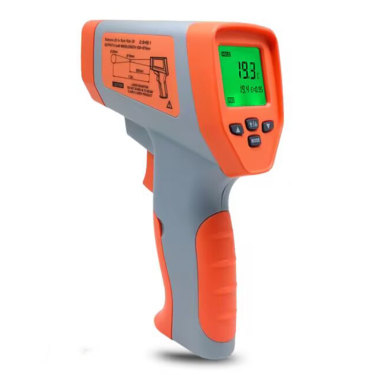Cooking Thermometer: Essential Tool for Perfectly Cooked Meals

# Cooking Thermometer: Essential Tool for Perfectly Cooked Meals
## Why Every Kitchen Needs a Cooking Thermometer
A cooking thermometer is one of the most underrated yet essential tools in any kitchen. Whether you’re a professional chef or a home cook, this simple device can make the difference between a perfectly cooked meal and a culinary disaster. Unlike guesswork or visual cues, a thermometer provides precise temperature readings that ensure food safety and optimal flavor.
## Types of Cooking Thermometers
### 1. Instant-Read Thermometers
These provide quick temperature readings and are ideal for checking the doneness of meats, poultry, and fish. They’re perfect for grilling and pan-frying.
### 2. Oven-Safe Thermometers
Designed to remain in the food while it cooks in the oven, these thermometers are great for roasts and baked dishes.
### 3. Probe Thermometers
Often used with a digital display, probe thermometers allow you to monitor temperatures without opening the oven door. Many models come with alarms to alert you when the desired temperature is reached.
### 4. Candy and Deep-Fry Thermometers
These specialized thermometers measure higher temperatures, making them essential for making candy, frying foods, or brewing.
## Benefits of Using a Cooking Thermometer
Using a cooking thermometer offers numerous advantages:
- Food Safety: Ensures meats reach safe internal temperatures to kill harmful bacteria.
- Perfect Doneness: Helps achieve the ideal level of doneness for steaks, poultry, and other proteins.
- Consistency: Delivers consistent results every time you cook.
- Prevents Overcooking: Eliminates the risk of drying out meats by cooking them just right.
## How to Use a Cooking Thermometer Correctly
Step 1: Choose the Right Thermometer
Select a thermometer suited for your cooking method—instant-read for quick checks or probe for continuous monitoring.
Step 2: Insert Properly
For meats, insert the thermometer into the thickest part, avoiding bones or fat. For liquids, stir before measuring to ensure an even temperature.
Step 3: Wait for Accurate Readings
Allow a few seconds for digital thermometers to stabilize. Analog thermometers may take longer.
Step 4: Clean After Use
Always sanitize your thermometer after each use to prevent cross-contamination.
## Recommended Internal Temperatures for Common Foods
| Food | Safe Internal Temperature (°F) |
|---|---|
| Chicken (whole) | 165°F |
| Ground Beef | 160°F |
| Pork (chops, roasts) | 145°F |
| Fish | 145°F |
| Egg Dishes | 160°F |
## Conclusion
A cooking thermometer is a small investment that pays off in big ways—ensuring safety, enhancing flavor, and improving your overall cooking experience. Whether you’re grilling, baking, or frying, this tool takes the guesswork out of cooking and helps you achieve restaurant

